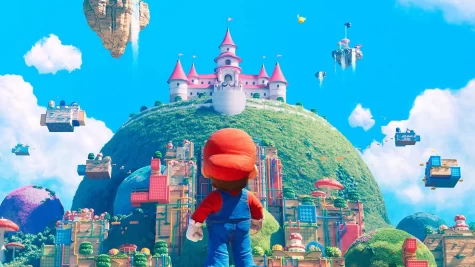Keeping animals in captivity at zoos is unethical
The placement of animals in caged, artificial environments has become socially normalized in our modern day society. Schools, families and vacationers frequent zoos of all sizes across the globe. Keeping animals in captivity is unnatural and should be viewed as unethical.
Zoos have been around since seemingly the beginning of time. There are historical records from as early as 1250 B.C. that confirm Egyptians began keeping animals such as lions and giraffes in early zoos for their own entertainment, according to Laura Fravel from National Geographic News. Today, there are over 10,000 zoos across the globe.
It is evident that it has become rare for people to attend zoos solely for educational purpose; instead, they want to “ooh” and “ahh” at the animals behind the glass. They have become a highly sought-after attraction, an exploitative form of entertainment.
Zoos everywhere attempt to mimic the natural surroundings that animals would have in their wild habitats. This has brought more people to come visit. However, it was found that people did not like to take the time and energy to look far and wide in these habitats to see these exotic animals. They want the animals to be up close and personal with the glass or bars in between, according to author Jeffrey Hyson from St. John’s University.
These fraudulent habitats may appear to be natural; however, it is impossible to place every natural aspect of an African savanna in a few acres of American soil. These animals are being deprived of their natural rights to hunt, migrate/travel and breed on their own.
When animals are congested into smaller areas they have a higher risk of infant mortality and generate a higher tendency to pace back and forth in their cage, according to researchers Dr. Georgia Mason and Dr. Ros Clubb from the University of Oxford. To put this into perspective, a zoo polar bear spends 25% of its day pacing back and forth in enclosure which roughly represents one-millionth of the size of its natural habitat in the poles.
These animals subjected to captivity spend their entire lives behind gates, depending on their trainers and zookeepers to bring them their scheduled meals day-to-day. This is no way for a large animal to live when they should be grazing across miles each day or swimming about the vast ocean.
On the other hand, zoos like the San Diego Zoo’s Wild Animal Park aims to fight the increasing extinction of animals across the world by working to protect endangered species over its 1,800 acres, according to their website. Although some facilities help focus on rehabilitating species that are deemed endangered, this is only a small fraction.
“I strongly dislike zoos. I think they are animal prisons and it is fundamentally wrong to extract a healthy, stable animal from its environment just so a toddler can watch polar bears roll around lethargically, ” junior Ingrid Landgraver said.
The argument remains that zoos are still used for educational purposes, as they are highly frequented by young students from schools across the states. Nevertheless, people are not seeing these animals’ true behaviors as these animals are robbed of their most natural actions. They are confined to significantly smaller areas and deprived from normal physical exercise, according to PETA.
We are living in a world where no one second guesses the ethics of keeping large animals behind mass amounts of plexiglass. As long as the animals never escape or cause harm to the visitors, the animals’ health and happiness are not a concern. As long as the visitors are entertained enough to keep coming back and spending their money, zoos are willing to keep the animals contained.
The world we live in is teeming with beautiful creatures, and it is unfair and unethical for us to assume them as our own property by caging them up and profiting off of them. We have had our time to study the animals with which we share the earth; now it is time that we no longer subject them to our artificial projection of their homelands.
However, releasing these captive animals back into the wild proves to be unrealistic. These animals would lack knowledge of their true surroundings. They would struggle in ways like hunting and catching their own food and escaping predators. Instead, it is much more realistic to prevent zoos and parks from continuing to breed their animals, and end the genetic line of captive animals with the animals they have now.

Hi, I'm Ellie Burr and I am a Copy Editor on The Spartan Speaks this year! This is my first year on the staff, and I have thoroughly enjoyed it! I have...










